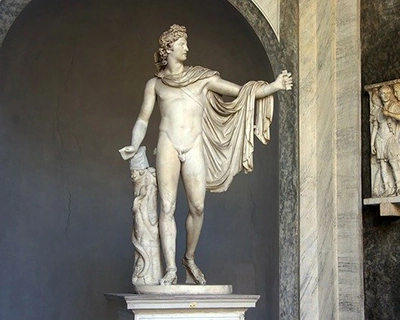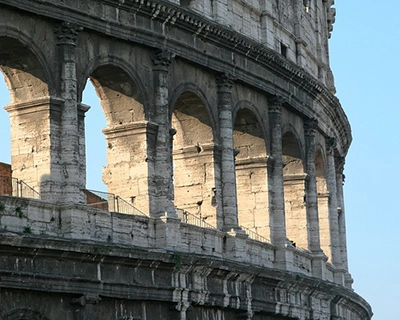Vatican city tips

Use full things to know
To prepare your visit to the Vatican museums, Sistine chapel and the Saint Peter's Basilica we did describe the most important things to know.
Read more
Vatican museums

Top 10 not to miss
To prepare your visit to the Vatican museums, Sistine chapel and the Saint Peter's Basilica we did describe the most important things to know.
Read more
General Vatican

General info and to know
What is the Conclave and how does it work? Year of Jubilee and other general info about the Pope and Vatican can be found here.
Read more
Neighborhoods in Rome, Prepare and read about the different districts in Rome.
Top 10 Free, Rome

Use full things to know
There are many things what you can do for free as long if you know where to look. We did put together a list of free things to do in Rome.
Read more
Public transport Rome

Use the Bus, Metro, Tram, Taxi in Rome.
This might be help full info everyone who is looking for general questions and answers about the do's and don'ts for the public transport in Rome.
Read more
Free walking Tours

Free tours around the world
Where ever you go on the moment you can find amazing tour guides offering a wide range of free tours around the world.
Read more
Eating in Rome

Check out our guide to the best places to eat and drink in Rome.
Looking for the best places to eat and drink in Rome? From traditional Roman trattorias to upscale restaurants and casual pizzerias, we've got you covered.
Read more
Ghost tour, Rome

Visit the Capuchin crypt, Rome
Discover the eerie beauty of Rome's Capuchin Crypt, where thousands of skeletal remains are artistically arranged, offering a unique and captivating experience.
Read more
Pizza in Rome

Some recommendations where to get the best pizza in Rome.
Pizza is a beloved dish all around the world, but there's no place quite like Italy when it comes to enjoying a slice of this delicious food. Buon appetito !!
Read more
The best time to visit Rome depends on personal preferences and travel goals.
The peak tourist season is from June to August, when the weather is warm and many events and festivals take place. However, it can also be crowded and expensive.
Spring (March to May) and fall (September to November) offer milder temperatures and fewer crowds, making it an ideal time for sightseeing and exploring.
Winter (December to February) is the off-season with lower tourism, but it can be chilly and some attractions may have reduced hours.
If you're looking to avoid the crowds and enjoy cooler weather, consider visiting in January or February.
The distance between the Colosseum and the Vatican is approximately 4 kilometers (2.5 miles).
The quickest way to travel between the two sites is by taxi, which takes about 15 minutes in normal traffic conditions.
Public transportation, such as the metro or bus, is also an option and takes about 30 to 45 minutes, depending on the route and connections. Walking between the two sites takes about an hour and is a great way to see some of Rome's other famous landmarks along the way.
For more information about Public transportation visit "How to use of the public transport in Rome".
Rome has several options for getting around the city, including:
- Public Transportation: Rome has an extensive public transportation system including buses, trams, and metro lines. The metro is the quickest way to get around the city, but it only covers a limited area. Buses and trams provide more extensive coverage, but they can be slower and more crowded during rush hour.
- Taxi: Taxis are widely available in Rome and can be hailed on the street or booked in advance.
- Bicycle: Rome has a bike-sharing system, and bicycles can be rented at various locations around the city.
- Walking: Rome is a compact city, and many of the main tourist attractions can be reached on foot. This is also a great way to explore the city's narrow streets, alleyways, and piazzas.
- Scooter or motorbike: Renting a scooter or motorbike is a fast and convenient way to get around the city, especially during rush hour.
For more info see our article : ''Use of the public transport in Rome''
Here are some of the most popular tourist attractions in Rome:
- Colosseum: A symbol of Rome's ancient history and one of the largest and best-preserved amphitheaters in the world.
- Vatican City: The smallest independent state in the world and home to the Pope, with famous attractions such as St. Peter's Basilica, the Sistine Chapel, and the Vatican Museums.
- Roman Forum: The political and commercial center of ancient Rome and a site of many important historical buildings and monuments.
- Pantheon: A well-preserved ancient temple dedicated to all the gods and an impressive example of Roman engineering and architecture.
- Piazza Navona: A beautiful Baroque square in the heart of Rome, surrounded by cafes, restaurants, and three magnificent fountains.
- Trevi Fountain: One of Rome's most famous landmarks and a traditional spot for making a wish.
- Castel Sant'Angelo: A castle and museum located on the banks of the Tiber River and once used as a papal residence.
- Spanish Steps: A famous staircase in the heart of Rome, leading up to the Trinità dei Monti church and offering panoramic views of the city.
- Campo de' Fiori: A lively square in the heart of Rome, famous for its daily market and nightlife.
- Borghese Gallery: A world-renowned art museum housed in the Villa Borghese and featuring an impressive collection of sculptures and paintings.
The Vatican Museums and Sistine Chapel are considered a must-see for many travellers to Rome, as they offer a unique opportunity to see some of the world's greatest works of art and architecture. The museums house a vast collection of art and artifacts from ancient times to the Renaissance, and the Sistine Chapel is famous for its magnificent ceiling painted by Michelangelo.
If you are interested in art, history, and religion, a visit to the Vatican Museums and Sistine Chapel is definitely worth it. However, it can be crowded and busy, so it is recommended to book your tickets in advance to avoid long lines. Some visitors also choose to hire a guide to get a more in-depth understanding of the collections and history of the Vatican.
In short, whether a visit to the Vatican Museums and Sistine Chapel is worth it or not depends on your personal interests and travel goals, but it is generally considered a once-in-a-lifetime experience.
Here are some of the ways to get to the Colosseum and the Vatican:
Colosseum:
- By metro: The nearest metro station to the Colosseum is Colosseo on Line B. From there, it's a short walk to the entrance.
- By bus: Several buses stop near the Colosseum, including the #75, #81, #85, and #87.
- On foot: The Colosseum is within walking distance of other popular tourist attractions such as the Roman Forum and the Palatine Hill.
Vatican museums:
- By metro: The nearest metro station to the Vatican Museums is Ottaviano on Line A. From there, it's a 10-15 minute walk to the entrance.
- By bus: Several buses stop near the Vatican Museums, including the #40 and #64.
- On foot: The Vatican Museums are within walking distance of St. Peter's Basilica and other popular tourist attractions in the Vatican City.
It is recommended to book your tickets in advance, especially during high tourist season, to avoid long lines and ensure that you can get into the Colosseum or the Vatican Museums at the time you prefer.
Yes, you can drink the tap water in Rome. The tap water in Rome is safe to drink and of high quality, supplied by a network of springs and aqueducts.
In general, the tap water in Italy is considered safe and clean, and many locals and tourists drink it without any problems.
However, if you are unsure or have any concerns, bottled water is readily available and a good alternative.